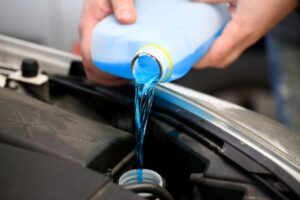The EPA recently announced a proposed rule under the Toxic Substances Control Act (TSCA) that would protect workers and consumers from exposure to the solvent n-methylpyrrolidone (NMP).
The “EPA’s 2020 risk evaluation found that this chemical causes serious health effects, including miscarriages and reduced fertility, as well as damage to the liver, kidneys, immune system and nervous system,” according to an Agency news release. “If finalized, the rule would limit the concentration of NMP that would be allowed in some consumer and commercial products, establish strict workplace health controls for many uses of NMP, and ban some uses that cannot safely continue and for which alternatives already exist.”
“We’re making great strides in our efforts to protect people’s health from exposure to chemicals like NMP,” Michal Freedhoff, assistant administrator for the Office of Chemical Safety and Pollution Prevention, said in the release. “Our proposed commonsense worker protections would keep people safe while also ensuring that NMP could continue to be used, as needed.”
NMP is used to manufacture and produce electronics, polymers, agricultural chemicals, and petrochemical products. It’s used in the production of specialized electronics, such as semiconductors and magnet wire, as well as lithium-ion batteries, which are used in a wide variety of applications, including aerospace vehicles and electronic devices. NMP also has numerous other industrial, commercial, and consumer applications, including adhesives and sealants, paints and coatings, paint removers, lubricants, automotive care products, degreasers, and cleaning and furniture care products.
To protect consumers from exposure to NMP in glues and adhesives, the EPA is proposing an NMP concentration limit of no greater than 45%, as well as container size limits and labeling requirements for other types of consumer products so they aren’t used in commercial settings, where their more frequent use could pose risks.
The EPA is also proposing an NMP Workplace Chemical Protection Program (WCPP) to protect workers from exposure to NMP for nearly all industrial and commercial uses. The WCPP would include requirements to prevent direct skin contact with NMP that would go into effect a year after the rule is finalized.
The EPA believes that many sectors, including the semiconductor and lithium-ion battery manufacturing sectors, have already implemented the types of exposure controls the EPA would require. For example, semiconductor manufacturing fabrication machines, enclosed and automated tools, and clean rooms are some of the exposure controls already in place the EPA expects will meet the requirements of the rule. For several other occupational conditions of use of NMP (such as its use in paints, adhesives, inks, coatings, and soldering materials), the EPA proposes to require prescriptive workplace controls, including concentration limits and use of personal protective equipment.
The proposed rule includes banning the commercial use of NMP in automotive care products, cleaning and degreasing products, metal products, and cleaning and furniture care products because the EPA believes these uses can’t safely continue. The EPA is also proposing to ban the use of NMP in antifreeze, de-icing products, and lubricants because it believes these uses have already ceased. The proposed rule would also ban the commercial use of NMP in fertilizers and other agricultural chemical manufacturing processes because the EPA doesn’t currently have information demonstrating they can’t be safely continued. For these uses, the EPA believes that such information may exist, and it expects to conduct proactive outreach during the comment period to better understand industrial practices associated with these uses.
The EPA encourages the public and stakeholders to comment on the proposed rule. Once published in the Federal Register, comments will be accepted for 45 days under Docket # EPA-HQ-OPPT-2020-074.

